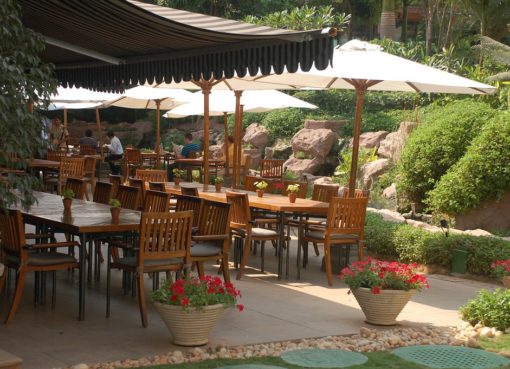For most restaurants, your year is really affected by the different seasons. It’s how well you take advantage of the different seasons that determine whether your restaurant will be a success or a failure. Restaurant owners that are successful realize that the money they earn at Christmas will have to get them through the remaining winter months. Restaurant owners that fail to plan for the slower periods run out of cash, and end up with cash flow problems that could cost them their business.

While the seasonal slowdown is not good for the financial health of your restaurant, it does not have to be wasted time. One of the big complaints in the restaurant business is that there isn’t enough time to do all of the things that need to be done. during the sower season you can be doing things that you don’t have time to do when it’s busy that can contribute to your restaurants success.
Evaluate Your Menu
Just like the food in your pantry, your menu can get stale if it is too old. while I do like the familiarity of knowing what to expect when I visit my favorite haunts, that does not mean that I don’t appreciate periodic updates.
Trends in food service change, and you need to be flexible enough to change with the times. That does not mean chasing every fad that comes down the pike, but it does mean you need to be able to give your customers what they want.
You should also have a plan to take advantage of seasonal offerings. Produce is especially prone to large price swings as the seasons change. You can really help your food cost be adjusting your menu to take advantage of the lower costs of items when they are in season.
Even if the food items on your menu don’t change, it can be helpful from time to time to give your menu a fresh look. Rearranging the placement of items on your menu can drastically affect your sales mix. This is a great way to increase the sales of items that have a larger profit margin, and giving your bottom line a nice boost. It may be worth having a menu design professional take a look at your menu for some help in where to place items.
This is also a great time to spend some office time re-evaluating your cost of the items on your menu. with food cost being such a large percentage of your overall costs, you should make sure you are always aware of how your menu items are priced.
Clean
Yes, I know you clean your restaurant every day. That is part of the staffs side work. What I an talking about is really taking the time to deep clean. If your dining room is large enough, you might want to close a section down to do some over due deep cleaning.
Pay special attention to those areas that might get missed during normal cleaning. Places like edges and corners, baseboards, lighting fixtures, and table and chair legs are prime spots. Even areas that get cleaned on a regular basis can benefit from a good deep cleaning.
Another area that can get neglected is your kitchen. Now is a good time to pull equipment out from the walls, strip coolers and freezers, and degrease walls, hoods, filters, and equipment. Just because the public doesn’t see it does not mean the kitchen should be held to a lesser standard.
Do Repair Work
I have written in the past about looking at your restaurant with a critical eye. This is a good time to look at your restaurant with a lot of attention to the little details. Is the paint on the walls still in good shape, or is it starting to look discolored? Is the wall paper starting to separate at the seams?
There are probably a lot of small repairs and touch-ups you can do to your restaurant that will not cost a lot of money. Mostly what it takes is the time to get around to getting them done.
Train Your Staff
Your staff is the face of your restaurant. They are the hands and feet that represent you to your customers. Now is a great time to make sure they are trained the way you want. Your staff should know what is on your menu, how to deal with customer complaints, the correct way to do their side work, and anything else that you feel will contribute to the success of your restaurant.
This does not have to mean having full-blown training sessions. It could mean scheduling small modules of training at the beginning of the shift, or taking advantage of a time where there aren’t many customers in the dining room.
Develop a list of areas that you want to have covered. As time permits, work your way through your list. Make sure you keep track of who has received training, and who you still need to talk to. come up with some brief handouts that cover the information you are trying to teach, that way your staff has a take-away that they can refer to at a later time.
Operation Overhaul
When you do the same job every day it is very easy to fall into a routine that never changes. If you ask your staf why they do a certain job the way they do, chances are the answer will be along the lines of, “It’s the way we’ve always done it.” That does not mean it is the best way, it just means it is the way they are used to doing it.
Now might be a good time to examine your entire procedure to see if there are changes that might make your restaurants operation more efficient. This could include ordering and inventory procedures, how your cooler and freezer are arranged, your reservation taking procedure, or even the way your cooking line is set up.
Every little thing you can do to make your restaurant operate more efficiently is a good thing. Every minute you save in one area is time that can be spent paying attention to other areas.
Many times the difference between a restaurants failure and success are a collection of little things that either do or don’t get taken care of. The more of those little details that you can stay on top of, the more likely that your restaurant will succeed. Take advantage of this slower season to handle those details.




